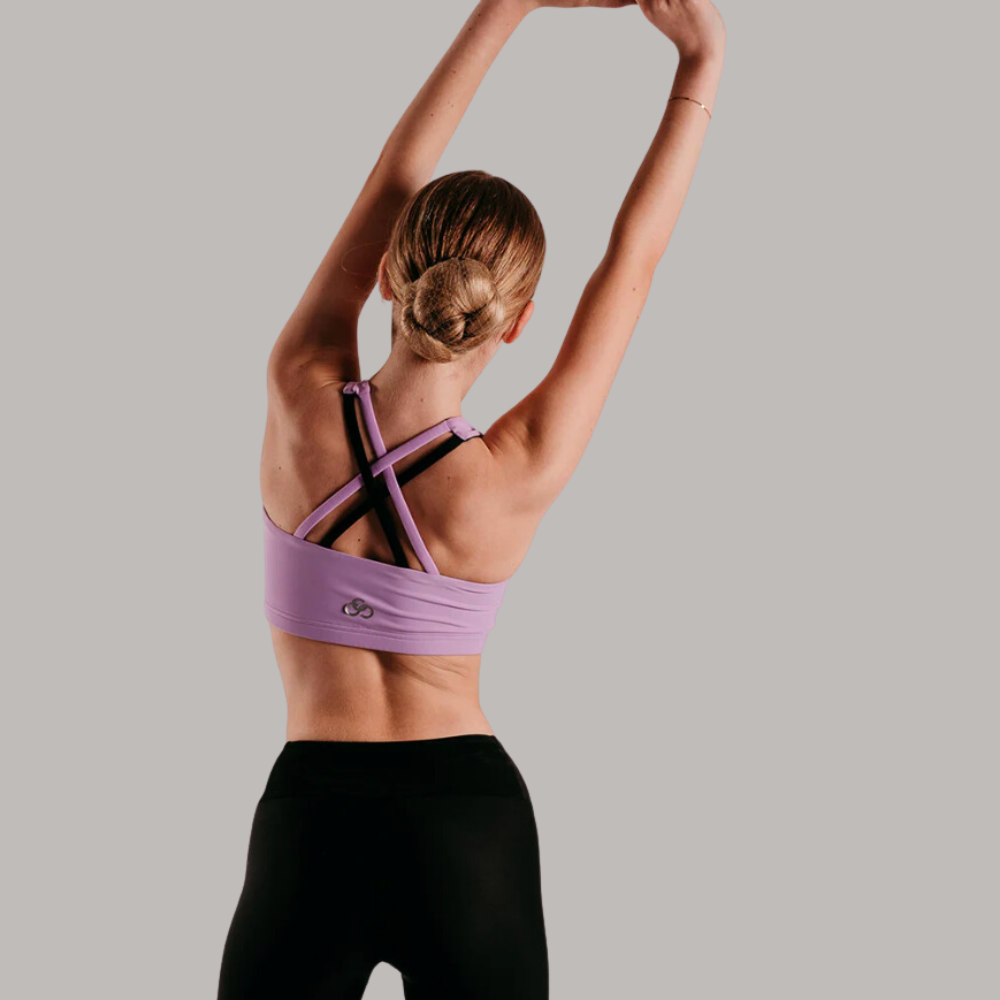Choosing the right figure skating equipment isn’t just a matter of style (although that’s always a bonus!) Skating equipment should also provide comfort, safety, and enhance your on-ice performance - whether you skate for fun or compete professionally. Quality skating gear is therefore essential! This guide will show you what skating equipment you need in your kit bag, ensuring you're well prepared to hit the ice with confidence.
12 Figure Skating Equipment Essentials
This meticulously curated list showcases the top 12 essential pieces of figure skating equipment for skaters at all levels, from beginners finding their balance to advanced athletes perfecting their skills.
Let's jump in!
1. Ice Skates
Selecting the right ice skates is vital for anyone learning to figure skate. The design difference between figure skates and ice hockey skates, for example, greatly affects performance and control on the ice. Unlike hockey skates, which have a shorter, curved blade designed for quick movements, figure skates feature a longer, flatter blade with a toe pick essential for figure skating jumps.
Consider the following factors when choosing a pair of figure skates:
Level of Skating Experience
- Beginner figure skates are designed with comfort features like quilted lining and foam padding. They typically have a lower stiffness rating, providing enough support to prevent ankle rolling yet allowing easy movement across the ice. These skates are often affordably priced, as beginners outgrow their abilities quickly.
- Intermediate figure skates are designed with features that accommodate developing skills, such as a more secure fit and better quality blades. The price range for intermediate skates is usually moderate, reflecting their enhanced features compared to beginner skates.
- Advanced figure skates provide high levels of support and are designed for complex movements and jumps. They often feature carbon fiber soles for reduced weight and increased support. The price for advanced skates is higher, reflecting their premium materials and design suited for high-level performance.
Fit of the Skates
- Length: Skates should fit snugly without cramping toes. Start with a size that's a half-size smaller than your regular shoe size as skates often run smaller.
- Width: Ensure the skate isn't too tight or loose across the widest part of your foot. Skates come in different width sizes (narrow, medium, wide).
- Heel & Ankle Support: The heel should fit securely with minimal movement, and there should also be a firm grip around the ankle. High-quality skates often have padding or reinforced areas for extra ankle support.
Figure Skate Brands
When selecting figure skates, it's beneficial to consider popular and reputable brands known for their quality and performance. Some of the well-regarded brands include Jackson Ultima, Riedell, Edea and Botas.
2. Skate Guards
Skate guards are protective covers that slip onto the blades of ice skates to protect them when walking off-ice. They are essential in figure skating to preserve the sharpness and quality of the blades, which can easily be damaged by walking on hard surfaces.
Here are a few top tips for choosing and using figure skating guards:
- Select guards that fit your blade size for optimal protection.
- Regularly clean the skate guards to prevent dirt buildup and rust on the blades.
- Avoid storing your skates with skate guards on for extended periods - this will prevent moisture retention, which can cause rusting.
3. Figure Skating Clothing
Choosing appropriate clothing for ice skating or figure skating training is essential for comfort, safety, and performance. Proper figure skating clothing provides the necessary warmth in cold ice rinks, allows for free movement during practice, and helps prevent injuries through supportive and protective designs.
Three staple items of clothing for ice skaters:
- Figure Skating Leggings: Durable and warm, they allow for flexibility and protect the skin from the cold and potential falls. Our skating leggings are made with cut-resistant material as well, meaning they’re less likely to rip during a fall on the ice.
- Figure Skating Jackets: A fitted jacket provides warmth on the ice rink, without restricting movement. Padded coats are also great for getting to and from the rink, while bodywarmers ensure you don’t overheat during training.
- Figure Skating Sport Bras: These are essential for female ice skaters to provide support and comfort, especially during high-intensity training sessions.
Don't forget to check out our full range of figure skating clothes for men, women and kids!
4. Appropriate Socks
Wearing the right socks for ice skating is crucial for comfort and performance.
Your socks should be thin to medium thickness, as thick socks can reduce control of the skate and can cause overheating or blisters. It's equally important your figure skating socks fit well without bunching up - this makes your feet more comfortable as blood can circulate properly. You should also consider materials that wick away moisture to keep your feet dry. Layering socks is generally not recommended for these reasons.
Packing a spare pair of socks in your kit bag can also be a smart move, in case your first pair become wet or uncomfortable!
5. Figure Skating Pads
Pads are an essential part of figure skating gear, especially for beginners and intermediate skaters who are more prone to falls. They provide crucial protection from bumps, bruises, and impacts that are common while learning new techniques. Even advanced skaters occasionally use pads during practice of challenging maneuvers.
Types of pads for ice and figure skating include:
- Knee Pads: Protect knees from hard impacts on the ice.
- Elbow Pads: Cushion the elbows during falls.
- Hip Pads: Guard the hips, a common impact point for falls.
6. Helmet
Wearing a helmet is highly beneficial when learning to ice skate or figure skate, particularly for beginners or young skaters. Helmets offer vital protection against head injuries, which can occur from falls or collisions. For figure skating, helmets designed for winter sports, such as ski or snowboard helmets, are suitable as they provide the necessary protection without being too bulky.
Beginner skaters of all ages, especially children, should wear helmets to ensure safety while they're still mastering balance and techniques on the ice. Here's a few top tips for wearing a helmet while figure skating:
- Ensure the helmet fits snugly without being too tight, with no gap between the top of your head and the helmet.
- The helmet should sit level on your head, covering your forehead, not tilted back or too low.
- The chin strap should be fastened securely, allowing only a couple of fingers' space for comfort and safety.
7. Figure Skate Bag
A dedicated figure skating kit bag will be a lifesaver when you’re getting ready for on-ice practice! This bag will ensure all your skating equipment is organised, protected and easily accesible when you need it. This is especially important for beginners who are accumulating new gear and need to keep it in good condition.
There are various types of bags figure skaters may find useful:
- Skate Bag: Specifically designed to store and protect ice skates, keeping blades dry and secure.
- Duffel Bag: Ideal for carrying additional gear like clothing, towels, and snacks, offering ample space and compartments.
- Tote Bag: Perfect for lighter loads or short practice sessions, providing quick access to essentials like water bottles, guards, and gloves.
8. Ice Skate Soakers
Ice skate soakers are used to cover ice skate blades after skating. They differ from skate guards as they are not meant for walking.
Soakers are typically made from absorbent materials like terry cloth and are used to protect the blades from rust and damage by absorbing moisture. This is especially beneficial for figure skaters who need to maintain sharp, rust-free blades for optimal performance.
They slip over the blades easily and are ideal for protecting skates during storage and transport, making them a vital accessory in a skater's kit.
9. Boot Covers
Ice skate boot covers are a practical and stylish accessory for figure skaters. They serve multiple purposes: protecting the boots from scuff marks and damage, keeping them cleaner, and extending their life. For beginner figure skaters, boot covers are a simple yet effective way to safeguard their investment in quality skating boots.
Additionally, boot covers can add a touch of style or colour coordination with skating outfits!
When choosing boot covers, opt for durable, stretchable material that fits snugly over the boots. It's also important to ensure they are easy to put on and take off. Regularly washing them helps maintain their appearance and hygiene.
10. Microfibre Cloth
A microfiber cloth is highly useful post-practice, for drying figure skating equipment such as skate blades. Unlike regular towels, microfiber cloths are more absorbent and can quickly remove moisture from blades, preventing rust and maintaining their sharpness. Additionally, their soft texture ensures that they don't scratch or damage the blade surface.
These cloths are also useful for wiping down the boots, keeping them clean and in good condition. The compact size and quick-drying nature of microfiber make it a convenient and superior choice compared to regular towels for maintaining skating equipment.
11. Laces & Tightener
Having spare laces and a lace tightener is essential for any figure skater! Spare laces ensure that a skater can quickly replace a broken or frayed lace, which is common with the wear and tear of regular practice.
A lace tightener is also a handy tool to help tighten skate laces evenly and securely, providing the best fit and support. This can be especially important for beginners who are still learning how to achieve the right tension in their skates.
Try these useful tips for lacing ice skates correctly:
- Start at the bottom and work your way up, ensuring even tension throughout.
- Cross the laces diagonally as you lace, for better foot and ankle support.
- Avoid tying laces too tightly over the instep to maintain circulation and comfort.
12. Water Bottle
Staying hydrated is crucial when figure skating, as intense practice can quickly lead to significant sweating and dehydration!
Proper hydration helps maintain energy levels, concentration, and physical performance. It also aids in temperature regulation and joint lubrication, reducing the risk of injuries.
Having a water bottle at hand allows skaters to conveniently hydrate during training sessions and competitions, ensuring they can perform at their best while maintaining their health and wellbeing.
Figure Skating Equipment FAQs
How often should you sharpen figure skates?
Figure skates should typically be sharpened every 20-30 hours of use. However, this frequency can vary depending on skating style, level of use, and ice quality. It's crucial to monitor your skates' performance, as dull blades can affect skating ability and precision.
How do you break in figure skates?
Breaking in figure skates involves gradually wearing them to mold to your feet. Start with short skating sessions, gradually increasing time spent on the ice. It's also helpful to wear the skates at home, flexing your feet in them to aid the process. Using proper socks and ensuring a good fit can also ease the break-in period.
Can you figure skate with glasses on?
Yes, you can figure skate with glasses on. Many skaters wear glasses without issue. It's important to ensure they fit well and won't slip off during movement. Some skaters opt for sports glasses or contact lenses for added comfort and security.
Chique Sport Figure Skating Clothing

Founded in 2014, Chique Sport is not just a brand; it's a reflection of our passion for figure skating! We blend innovative designs with the practical needs of skaters, both beginners and professionals. Our collections are rooted in quality and style, and are a testament to our dedication to the sport.
We understand the unique challenges and joys of figure skating, and this understanding is woven into every garment we create.
Check out our full range of stylish training clothes and accessoires, and save this guide for when you need to re-stock your figure skating kit bag!





